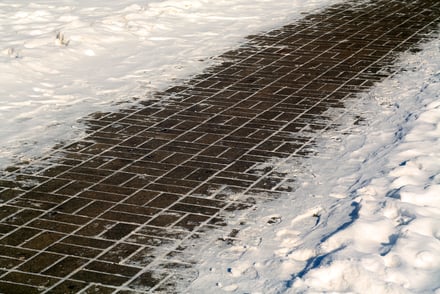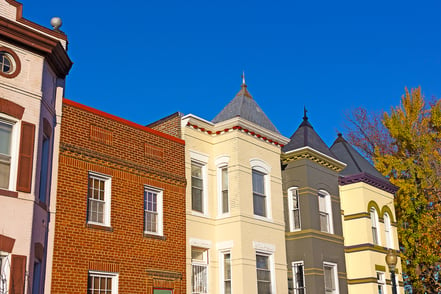Brick and mortar as building materials have been around for centuries. Mortar is a mixture of sand, cement, and water and is the binding agent that keeps brickwork together. Brick and mortar as building materials have undergone changes over the last 100 years. This is why it is critical to know when and how your old brick home was built as a first step to planning for repairs.
New Is Not Always Better
If your brick home was built before or shortly after 1900, the original mortar was a mix of lime and sand. In the early 1900s, Portland cement was introduced into the building trades. By the 1930s, masons were using equal parts Portland cement and lime in the mortar with bricks in new construction. Since bricks had started being mass-produced by this time, in a firing process that resulted in a harder, less porous brick, this was appropriate to the times. However, in the years since then, this harder material has sometimes been used, inappropriately, to repair historic DC row homes made of older, softer brick. This is a problem. When the mortar is harder than the bricks, this will lead to stress cracks and spalling in the bricks. The bricks are trying to breathe and they can't.
Bricks of a Certain Age
Older bricks were fired differently, resulting in a softer material. The mortar made from lime and sand provided a soft, flexible bond that allowed these old, clay-fired bricks to move, breathe, and disburse moisture without damage.
The mortar used to repoint historic brick and stone walls should be chemically similar to the existing material. It is particularly important that modern high-strength Portland cement mortar not be used to repoint historic walls containing low-strength cement mortar. Since modern mortar is harder than most historic brick and some stone, moisture migration from the interior to the exterior will move through the masonry units rather than the mortar joints. In cold weather, this will cause spalling of the brick or stone.
What Is Repointing or Tuckpointing?
The brick used to form exterior walls, patios, walkways, chimneys, and other long-lasting projects will last a century or more. Stone will last even longer. However, the mortar used to hold the bricks in place has a lifespan closer to a quarter-century.
Therefore, be prepared to replace the mortar every 25 years or so when it may show signs of cracking and crumbling. The repair and restoration process is called tuckpointing, also known as repointing. The pointer removes the deteriorating mortar and replaces it with new that is appropriate to the age and original building material.
Use a Professional Tuckpointing Service
Most people with knowledge of the repointing or tuckpointing procedure will advise you to use a professional repointing or tuckpointing service to renew and replenish the mortar and replace deteriorating bricks. These services are labor-intensive yet can prolong the lifespan and the value of your home.
Renaissance Development professionals are experts in restoring and maintaining historic brick homes and structures. Contact us for a consultation regarding the condition and care of your brick home or structures today.
Sep 16, 2021 8:45:00 AM


